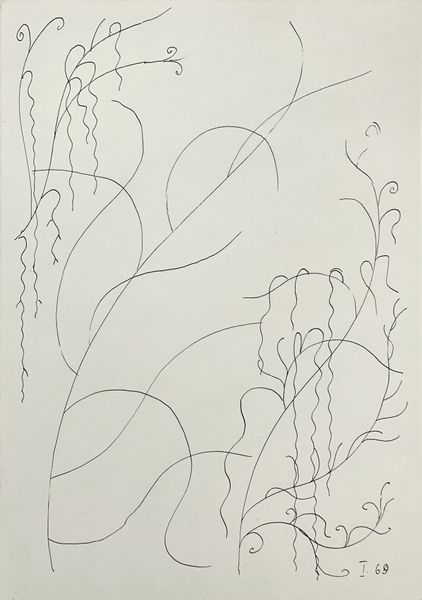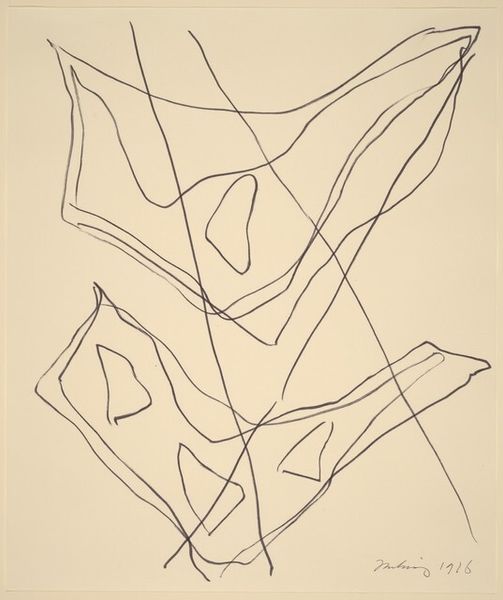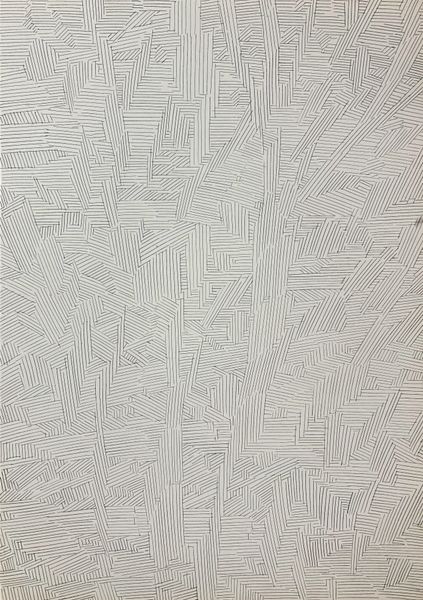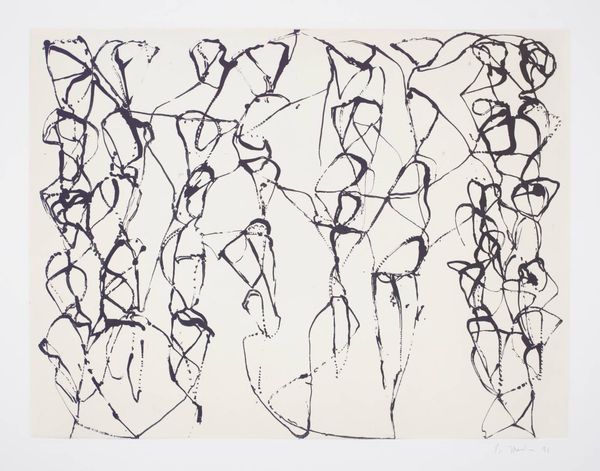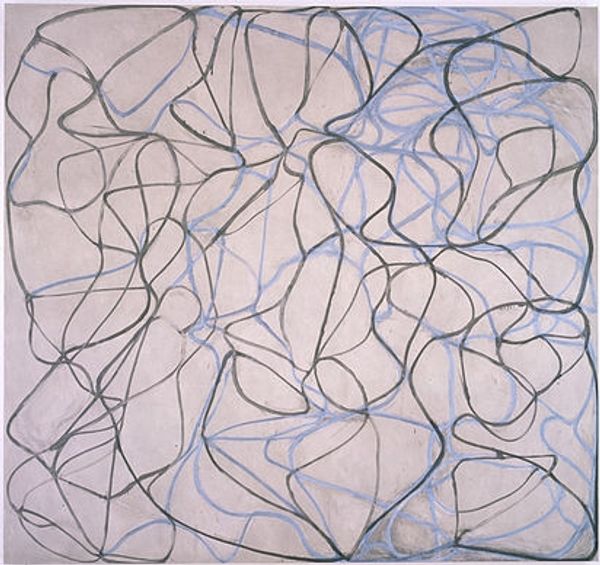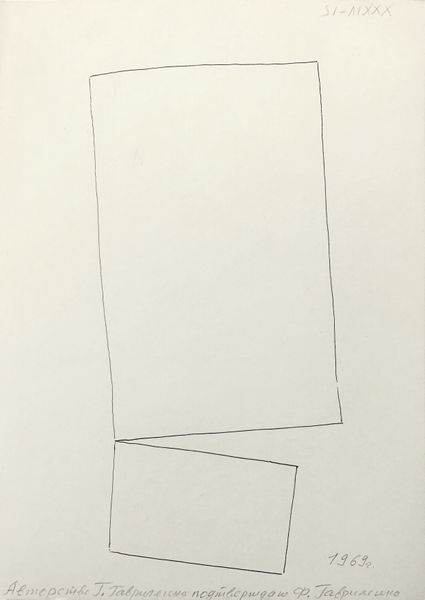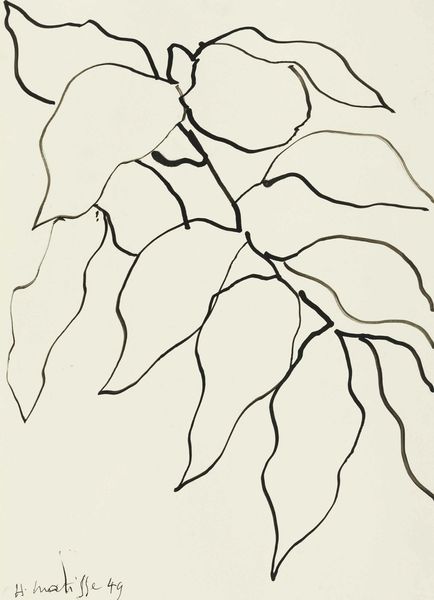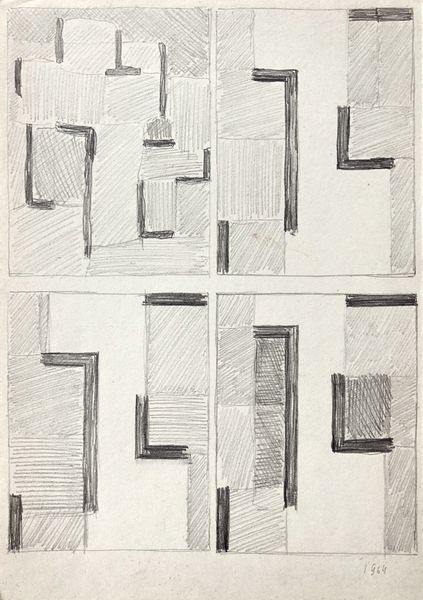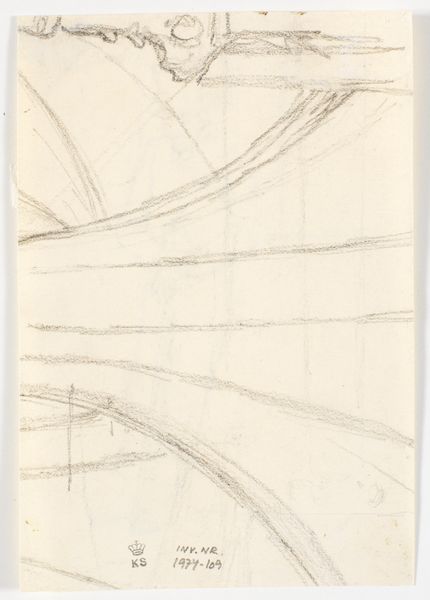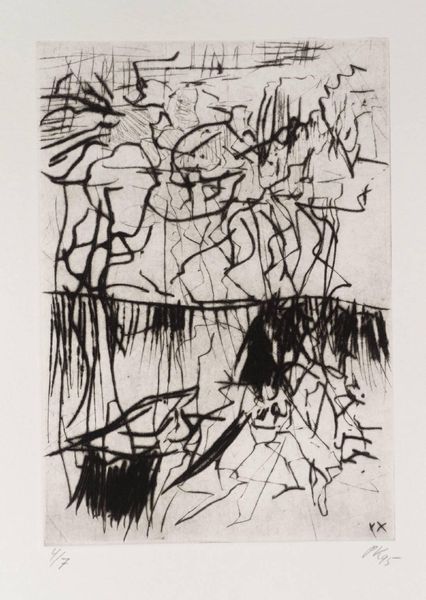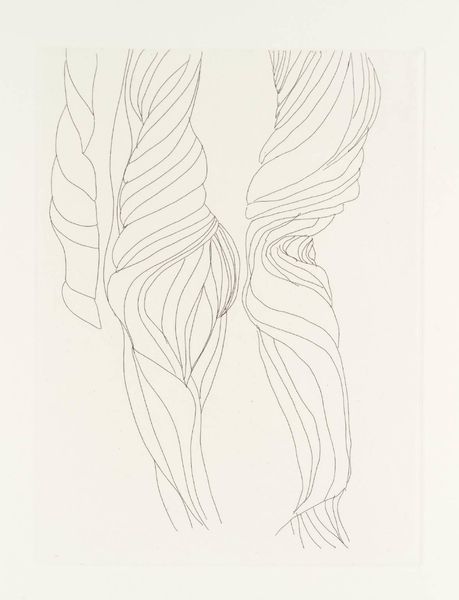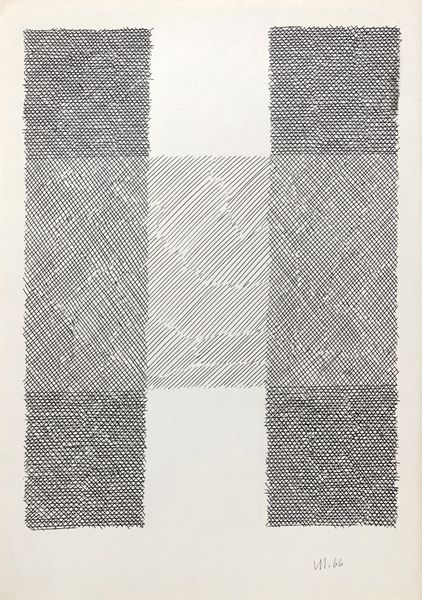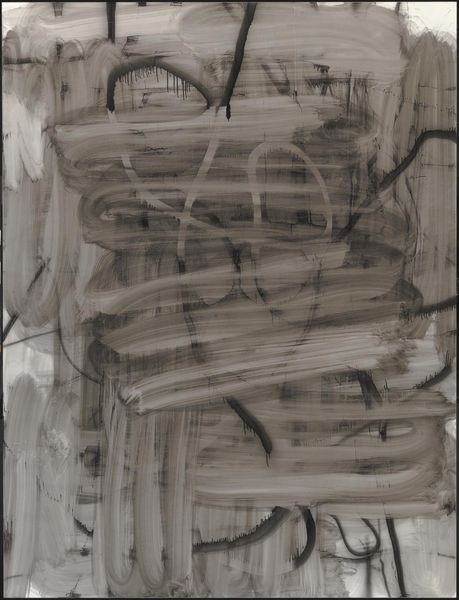
drawing, paper, ink
#
drawing
#
pattern
#
paper
#
ink
#
geometric
#
abstraction
#
line
Copyright: Hryhorii Havrylenko,Fair Use
Curator: I’m immediately struck by the quiet simplicity of this drawing, its division into two distinct registers, each filled with abstract forms. Editor: Today, we're examining “Two Compositions,” a drawing by Hryhorii Havrylenko, currently held in a private collection. Sadly, its exact date of creation is unknown. The artwork consists of ink on paper. Curator: The composition reminds me of architectural renderings or maps; one wonders if this simplicity was driven by available materials in the Soviet system or an intentional engagement with Constructivist principles emphasizing utility and function. Editor: It's fascinating how Havrylenko uses simple lines to suggest form and depth. Look at how he segments space, almost like shattered glass, creating an interplay between positive and negative space. There's an interesting ambiguity between landscape and pure geometric abstraction. It recalls Analytical Cubism and the reduction of objects into basic shapes. Curator: But is this just formal play, or is it something more? I’m wondering, looking at its seeming duplication as if looking into a mirror, whether the division also represents political realities in Soviet Ukraine? We might also ask what other works of this era used geometric abstraction to engage in veiled commentary on surveillance? Editor: That mirror imagery does raise the question of replication, but in terms of aesthetic experience, note the contrasting textures within the similar frameworks. One section's jagged edges provoke a nervous dynamism. At the same time, the lower register feels weightier, perhaps alluding to a landscape or topography, don't you agree? Curator: It's tempting to interpret the heaviness as reflective of socio-political oppression during the Soviet era, bearing in mind artistic censorship in Ukraine at this time. Editor: Perhaps. Though as a piece it creates such tension, its austerity and sharp contours somehow create space. Curator: Considering the historical setting truly reframes my perception of its composition, providing more historical depth. Editor: And for me, focusing on those elements makes the work all the richer when approaching socio-cultural factors in understanding such drawing from then until now.
Comments
No comments
Be the first to comment and join the conversation on the ultimate creative platform.
